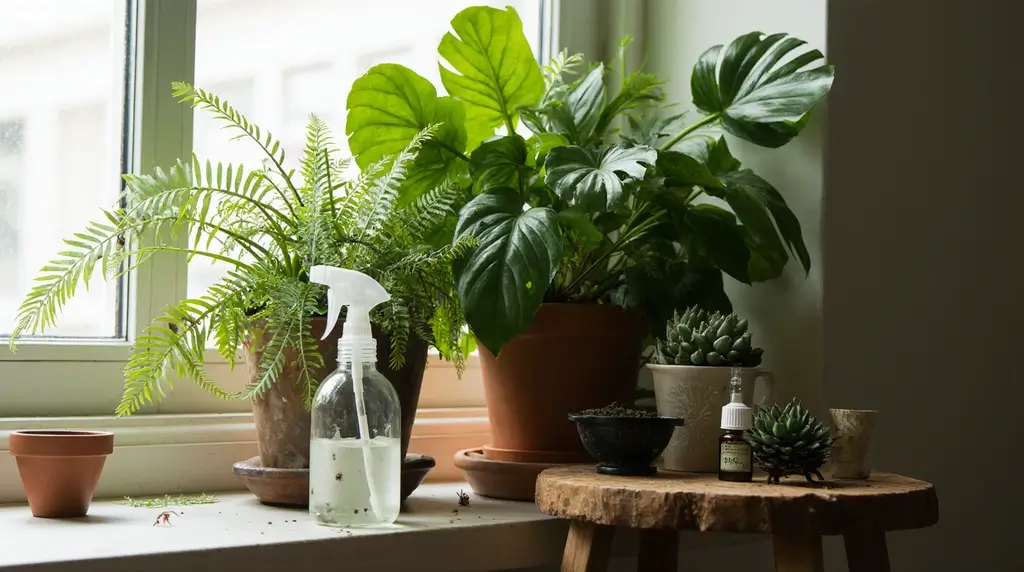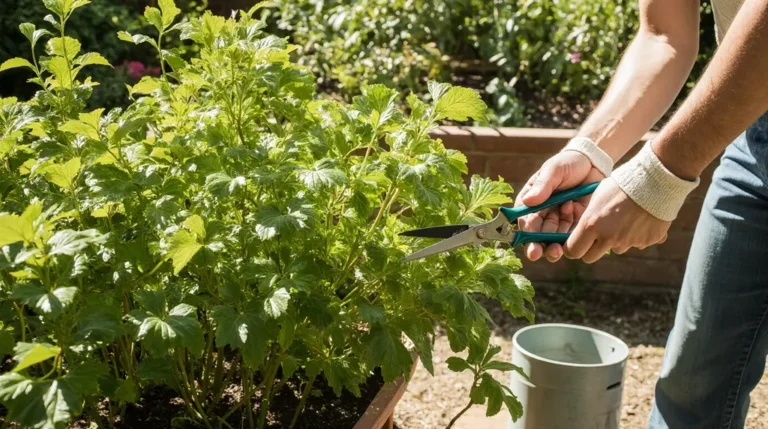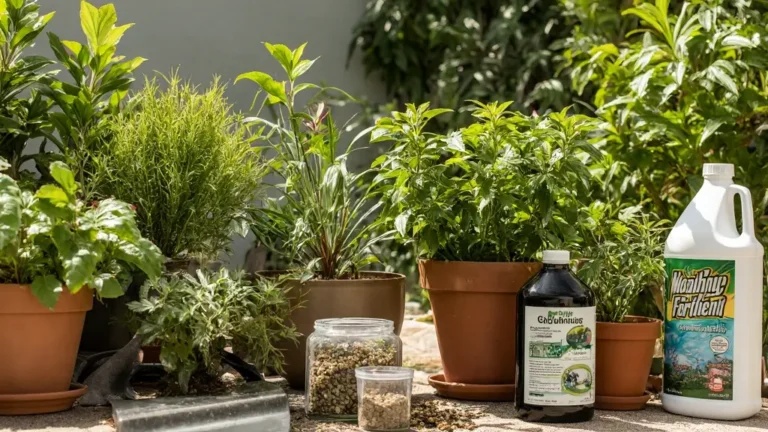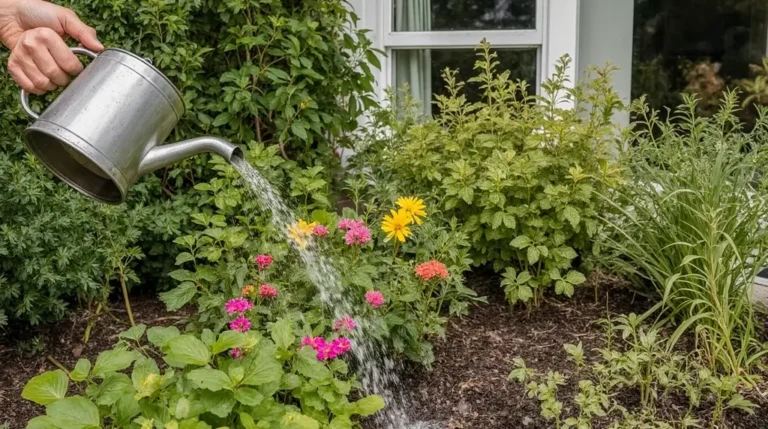Houseplant Pests: How to Identify and Eliminate Them Naturally
Table of Contents
Stop Battling Houseplant Pests, Start Managing Them Naturally
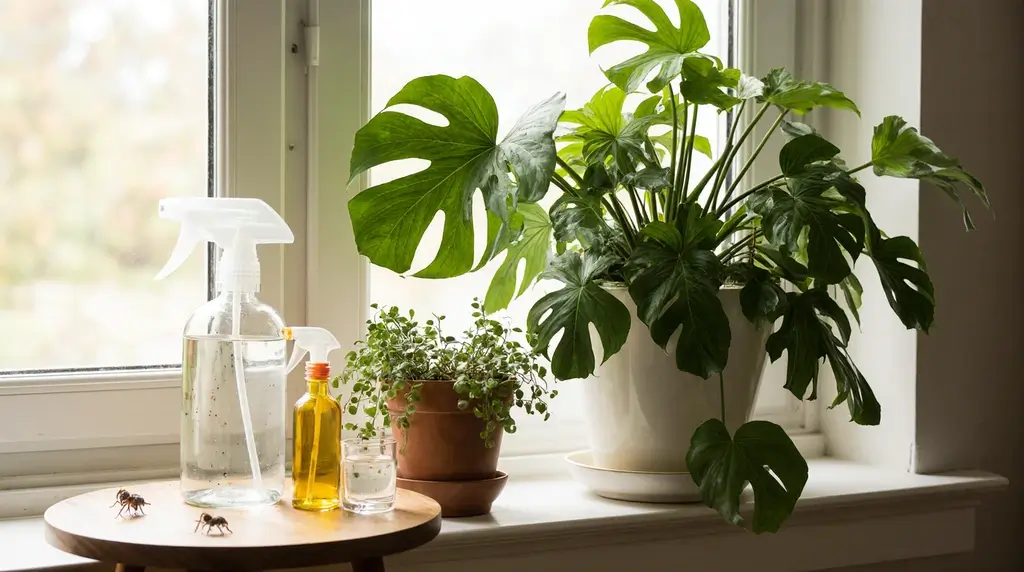
Okay, real talk—we’ve all had that moment. You’re doing your usual plant check, feeling pretty good about yourself, when BAM. You spot them. Those tiny little jerks crawling all over your favorite monstera. Spider mites, thrips, mealybugs—ugh, even saying their names gives me the creeps. The panic is real, friends. Suddenly you’re spiraling, wondering if you’re about to lose your entire plant collection. Looking to take your plant care to the next level? Check out our handy product that makes maintaining healthy, thriving plants easier than ever. get more info about How to Save Dying House Plants;
But here’s what I’ve figured out after years of keeping plants (and yes, killing a few along the way): you don’t need to become a pest-exterminating warrior. Honestly, the whole mindset shift from “oh no, I’m a Plant Killer” to “hey, I’m actually pretty good at this” happens when you stop freaking out and start managing things naturally. It’s about working with nature, not against it.
So here’s the deal—this guide is all about ditching the scary chemicals and focusing on natural methods that actually work. We’re talking beneficial insects (yes, good bugs that eat the bad bugs!), simple DIY sprays, and some common-sense practices that’ll keep your plants happy. Whether this is your first pest rodeo or you’ve been battling these little monsters for years, I’ve got you covered.
Oh, and before we dive in—do yourself a favor and take that Plant Parent Personality™ Quiz. Seriously, it’ll help you figure out which plants actually fit your lifestyle instead of buying stuff that’s doomed from the start. Trust me, prevention starts with choosing plants you can actually keep alive!
Foundation First: Implementing Integrated Pest Management (IPM)
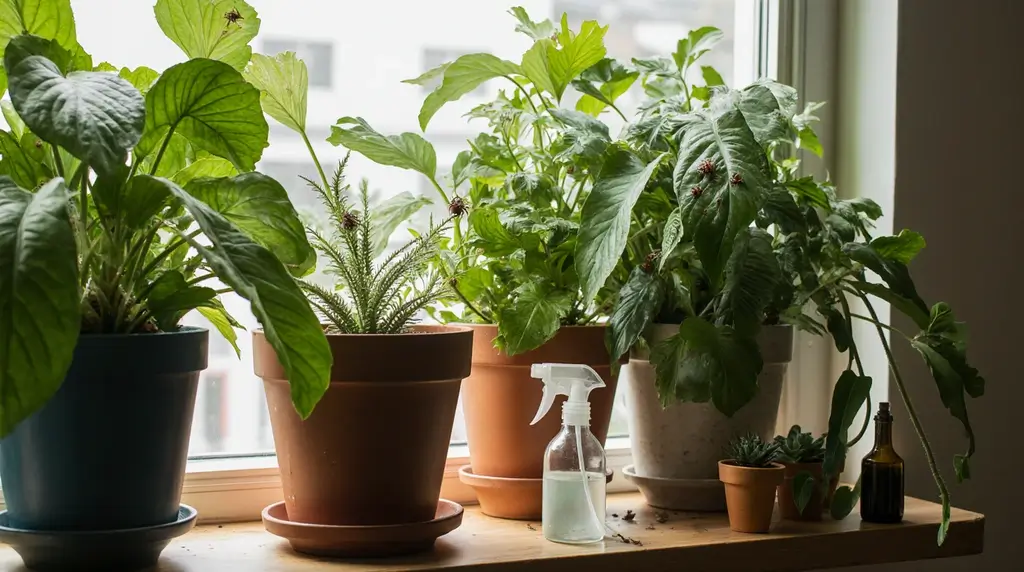
Alright, so there’s this thing called Integrated Pest Management (IPM for short), and it sounds fancy but it’s basically just smart plant care. Instead of reaching for the spray bottle every time you see a bug, you’re thinking ahead and preventing problems before they start. The pros use this acronym PAMS—Prevention, Avoidance, Monitoring, and Suppression. I know, sounds boring, but stick with me.
P: Prevention and Quarantine (Avoiding New Threats)
Let me tell you the #1 rule that’ll save you SO much heartache: quarantine every new plant. I mean it. Every. Single. One. Keep it away from your other plants for at least 30 days. I know you’re excited to add that new fiddle leaf fig to your collection, but just… don’t. Not yet.
Here’s why—that gorgeous plant from the nursery might look totally fine, but it could be hiding spider mite eggs, baby thrips, or fungus gnat larvae in the soil. These sneaky pests don’t always show up right away, and by the time you notice them, they’ve already thrown a house party and invited all your other plants.
Also, become a plant detective before you even buy anything. I’m talking full CSI inspection at the store. Check under those leaves (that’s where the creeps like to hang out), look at the stems, peek at where the plant meets the soil. If a plant looks sad, wilted, or just… off? Put it back. Don’t be a hero. Healthy plants can fight off pests way better than stressed-out ones.
Oh, and here’s a pro tip about soil—fungus gnats LOVE wet soil. Like, they throw parties in there. So either sterilize your soil before using it, or try something like LECA (those little clay balls) which basically eliminates the whole soil pest problem. If you’re sticking with regular soil, let it dry out between waterings. Your plants will thank you, and the gnats will move out.
M: Monitoring and Early Detection (Vigilance is Key)
Look, I get it—life gets busy. But here’s the thing: checking your plants daily (even if you’re not watering them) is the difference between “oh, a couple aphids, no big deal” and “DEAR GOD WHAT IS HAPPENING TO MY PLANTS.”
Make it part of your routine. Morning coffee? Check the plants. Watching Netflix? Glance at the plants. It becomes second nature, and catching problems early means you can actually fix them without losing your mind.
Also, wipe down those leaves every few weeks. I know it seems tedious, but dust buildup is like a pest motel—they love it. Plus, clean leaves mean better light absorption, better airflow, and honestly, prettier plants. Win-win-win.
And grab yourself some yellow sticky traps. They’re cheap, they work, and they’ll catch flying pests like fungus gnats and whiteflies before things get out of hand. Think of them as your early warning system. When you suddenly see more bugs on the traps, you know something’s up.
The Biological Solution: Effortless Pest Management with Beneficial Insects
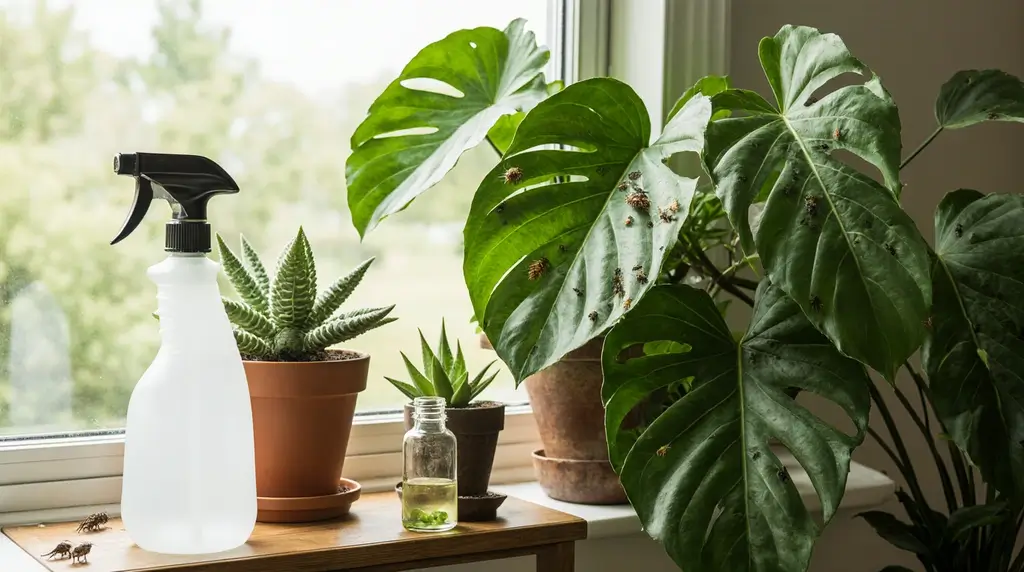
Okay, this is where things get cool. Ready for this? You can literally buy bugs that eat the bad bugs. I know it sounds weird, but stay with me—this is honestly game-changing for houseplant pest control.
Why Choose Beneficial Insects? (Sustainability and Safety)
Here’s the genius part: pests can’t develop resistance to being eaten. Like, they can eventually figure out how to survive certain sprays (looking at you, Captain Jack’s), but they can’t evolve to not get chomped by a hungry predatory mite. It’s foolproof!
And before you worry—these beneficial bugs are totally safe. They won’t hurt your plants, your pets, or you. If your dog eats one (because of course they would), it’s just extra protein. No joke, they’re harmless to mammals.
Plus, it’s way more sustainable than constantly spraying chemicals. You’re basically creating a mini ecosystem in your home where nature does its thing. It’s pretty cool when you think about it.
Matching the Predator to Your Pest (Pest-Specific Solutions)
So here’s your cheat sheet for which good bugs eat which bad bugs:
Spider Mites: Get yourself some Californicus mites or Persimilis mites. These guys are spider mite-eating machines—they’ll devour dozens of them daily, plus their eggs. It’s brutal. I love it.
Thrips: Okay, thrips are annoying because you need a whole squad to deal with them. Cucumeris mites, beneficial nematodes for the soil, and Orius insidiosus (fancy name for tiny pirate bugs—how cool is that?) to hunt the adults.
Mealybugs: Cryptolaemus larvae are your friends here. They’re called “mealybug destroyers” which is the most metal name ever for a bug. They look like mealybugs but bigger, and they absolutely wreck those little cotton-ball pests.
Flat Mites: Californicus mites got you covered again.
Fungus Gnats: Beneficial nematodes. They go into the soil and hunt down the larvae. Problem solved.
Scale Insects: Lacewing larvae will munch on these crusty little hitchhikers all day long.
How to Release Beneficials
So these beneficial insects usually arrive in little sachets, which sounds fancy but they’re basically tiny packets with bugs inside. The cool part? They slowly release fresh predators over like 6-8 weeks, so you’re not constantly reordering.
Just hang or place the sachets on your affected plants, follow the instructions, and let nature work. Within a few weeks, you’ll notice the pest population dropping. It’s honestly so satisfying.
Now, I won’t lie—beneficial insects can be pricey, especially with shipping. Here’s an insider trick: find other plant people in your area (Facebook groups, Reddit, wherever) and do a group order through places like DMV Beneficials. Instead of paying $40-50 per bottle, you might only pay $15-20 when you’re splitting shipping. Way better deal.
One heads up: if you’re allergic to bug bites, skip the lacewing larvae. They can bite if you handle them directly, and some people react badly.
Combining Tactics: Organic Sprays and Quick Knockdowns

Sometimes you need the bug equivalent of a fire extinguisher—something that works fast while you get your long-term plan together. That’s where these organic sprays come in.
Botanical and Oil-Based Treatments (Soft Controls)
Neem Oil Spray: If I could only recommend one thing, it’s neem oil. This stuff is the MVP of natural pest control. Mix some neem oil with water and a tiny squirt of dish soap (helps it mix), then spray everything—tops of leaves, bottoms, stems, all of it. It messes with pest life cycles so eggs don’t hatch and babies can’t grow up. Works on aphids, spider mites, whiteflies, fungus gnats… basically everyone. Plus it’s safe for pets once it dries.
Insecticidal Soap: This stuff suffocates soft-bodied pests. Works great on aphids, mites, and scale insects. You’ve gotta spray them directly though—it’s not a prevention thing, it’s a “get ’em while you see ’em” thing.
Garlic or Onion Water: Want to go full DIY? Steep crushed garlic or onion in hot water, strain it, and spray away. Pests hate it. Your plants might smell like Italian food for a bit, but hey, worth it.
Mechanical and Chemical Knockdowns
Rubbing Alcohol: For visible pests like scale and mealybugs, dip a cotton swab in rubbing alcohol (70% is good) and dab those suckers directly. The alcohol melts their waxy coating and they basically shrivel up. For bigger areas, mix it 1:1 with water and wipe down leaves.
Just be careful—some plants are sensitive to alcohol (I’m looking at you, African Violets). Test a small spot first, and don’t go crazy with it or you’ll dry out your plant.
Diatomaceous Earth: This is basically fossil dust that shreds bug exoskeletons. Sounds brutal, right? Sprinkle it on your soil surface and crawling bugs are done for. Super effective for fungus gnats. Just wear a mask when you apply it because breathing in the dust isn’t great for your lungs.
Mosquito Bits/Dunks (Bti): This is the gold standard for fungus gnats. Mix these in water and drench your soil. The bacteria kill the larvae but leave everything else alone—plants, pets, beneficial bugs, all good.
Systemic Granules: Okay, listen. Some people use systemic insecticides mixed into soil as prevention. They make the whole plant toxic to pests. But honestly? I don’t recommend them for regular use. They create super-resistant pests, they’re toxic to good bugs, and if your plant goes outside, they’ll kill pollinators. Only use these as a last resort for serious infestations, and never just “because.” Also, they don’t even work on spider mites, so there’s that.
Expert Tips for Specific Pest Battles
Let’s talk about the usual suspects so you know what you’re dealing with.
Quick Identification and Treatment Summary
Aphids: Little soft-bodied bugs that cluster on new growth. They suck sap and leave sticky goo everywhere. Colors range from green to black to pink. Fix it: blast them with water, then hit them with insecticidal soap or neem oil. Repeat weekly for three weeks.
Spider Mites: Tiny, almost invisible jerks that make leaves look speckled and yellow. Look for fine webbing. They love dry air. Fix it: increase humidity, spray with water, or bring in the predatory mites.
Thrips: Teeny tiny winged insects that cause silvery damage on leaves. Super annoying to get rid of completely. Fix it: throw the whole beneficial insect squad at them—Cucumeris mites, Orius bugs, and nematodes. You might need Captain Jack’s spray too, but bugs are building resistance to it.
Mealybugs: White fuzzy bugs that look like tiny cotton balls. Hide in all the plant crevices. Fix it: Cryptolaemus larvae will eat them, or manually remove with alcohol swabs if it’s a small problem.
Scale Insects: Look like brown bumps stuck to stems and leaves. They’re actually bugs hiding under a shell. Fix it: scrape them off or dab with alcohol. Lacewing larvae work great too.
Fungus Gnats: Those annoying tiny flies in your face all the time. The adults are harmless but their babies eat roots. Fix it: let soil dry out more, use sticky traps for adults, and drench soil with Bti or nematodes.
When to Combine Methods
Super important rule: don’t use beneficial insects and sprays at the same time. The sprays will kill your good bugs along with the bad ones. Pick a lane!
If you’re going biological, commit for at least 4-6 weeks. If you need to spray first to knock down a huge infestation, wait at least a week after your last spray before releasing beneficials.
And hey, if you’ve got spiders hanging around your plants—jumping spiders, cellar spiders, whatever—leave them alone! They’re free pest control. I know they’re creepy, but they’re on your team.
Cultivating Joy and Sustainability in Your Indoor Garden
Here’s the secret nobody tells you: the best defense against pests is just… healthy plants. Strong plants with good nutrition are way harder for pests to damage and bounce back faster when they do get attacked.
Use Good Stuff: Invest in quality organic potting soil and fertilizers (Espoma Organic is great). Your plants will be stronger and more resilient. It’s like eating well so you don’t get sick as often—same concept.
Water Smart: Overwatering is like rolling out the red carpet for fungus gnats and root rot. Check out resources like The Water-Smart Garden if you want to level up your watering game. Plus, conserving water is just smart these days.
Happy Plants = Pest-Resistant Plants: Pests are lazy. They go after weak, stressed plants because it’s easier. Give your plants the right light, humidity, and care for their species, and they’ll naturally be less interesting to bugs.
Embracing the Battle
Let’s be real—if you have houseplants, you’re going to have pests sometimes. It’s just part of the deal when you bring nature inside. And that’s okay! The goal isn’t to have a sterile, bug-free zone (that’s impossible anyway). The goal is just managing things so pests don’t destroy your plants.
By checking your plants daily, quarantining new arrivals like they’re in plant jail, and using natural methods like beneficial insects instead of harsh chemicals, you can keep things under control without losing your mind. You’re not just growing plants—you’re managing a little ecosystem. It’s actually pretty cool when you stop panicking about it.
The big mindset shift happens when you realize a few bugs doesn’t mean you’ve failed. It just means you’re successfully keeping living things that interact with the world around them. Every pest problem teaches you something, and honestly, that’s what makes you a better plant parent.
Ready to up your pest game? Check out suppliers like Green Methods, Koppert, or DMV Beneficials for those beneficial insects. Download the Ultimate Houseplant Pest Guide for detailed instructions. And share your wins (and disasters) with the plant community—we’re all figuring this out together, one bug at a time.
Your plants deserve care that works with nature, not against it. With these strategies, you’ve got everything you need to protect your green friends while actually enjoying the process. Now go forth and conquer those pests—naturally!
Houseplant Pests: How to Identify and Eliminate Them Naturally
Okay, real talk—we’ve all had that moment. You’re doing your usual plant check, feeling pretty good about yourself, when BAM. You spot them. Those tiny little jerks crawling all over your favorite monstera. Spider mites, thrips, mealybugs—ugh, even saying their names gives me the creeps. The panic is real, friends. Suddenly you’re spiraling, wondering if you’re about to lose your entire plant collection. Looking to take your plant care to the next level? Check out our handy product that makes maintaining healthy, thriving plants easier than ever. get more info about How to Save Dying House Plants;

